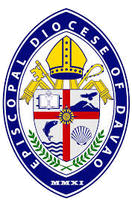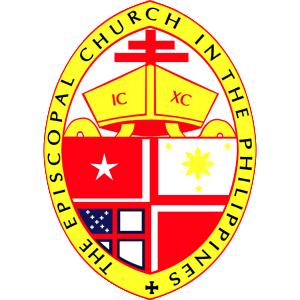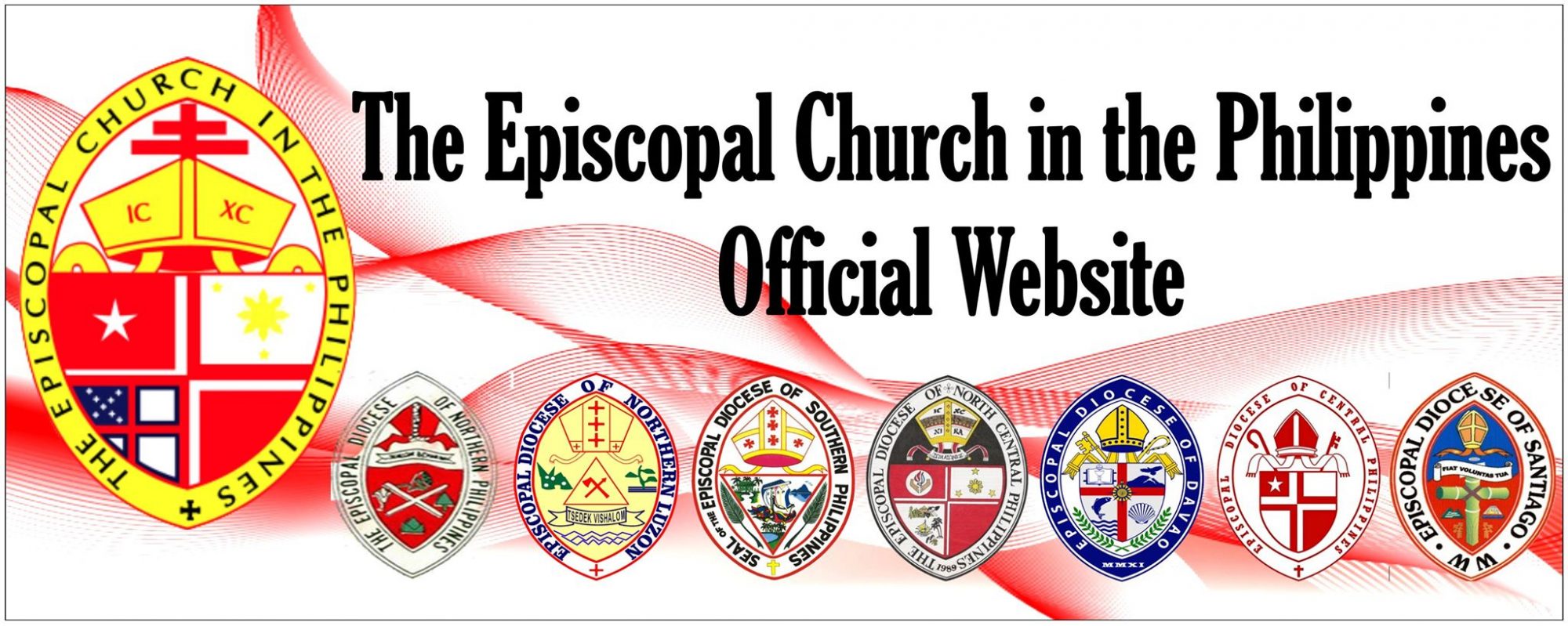table of contents
brief history

A Brief Historical Perspective
by the late Mr. George G. Gewan, Sr.
[The writer is indebted to the Rev. George Ocyadan Panisigan (Ret.) for providing most of the information used in this write-up. Fr. George is often called the “Mission Trail Blazer” for having pioneered the work that led to the establishment of most of the Church’s missions in what now comprises the EDD. Thanks are also due to Bishop Jonathan Labasan Casimina for filling in the portion on Davao City and Davao del Sur, areas he served prior to his forth coming elevation to the episcopate. —GGG].
The jurisdiction of the new diocese covers virtually the new areas where the Episcopal Church planted mission work fairly recently. This explains why the EDD is the smallest in the entire ECP in terms of baptized members and communicants, even while it is the biggest in point of area coverage. As approved in the division plan the EDD was formed by merging the areas covered by two deaneries and carved out of the Episcopal Diocese of Southern Philippines, namely, the Episcopal Deanery of Northern Mindanao and the Visayas (EDNMV) and the South Central Mindanao Episcopal Deanery (SCMED). The EDNMV included the CARAGA Region where no formal evangelistic missions have been established. And except for Cebu where St. James Mission was put-up in the 1990’s, the rest of the vast Visayan Region still awaits intrepid mission evangelization of the Episcopalian variety, as exemplified by the pioneering American Missionaries who blazed the trail in areas where the Gospel was hitherto unheard.
Chaplaincy Approach
A cursory appraisal of the historic development of what is now the EDD jurisdiction would indicate that church planting was effective following the chaplaincy approach to mission. In other words, the Church followed its members wherever they may have chosen to migrate and settle down. From there the local churches established became the “spheres of influence” to the neighboring towns and villages.
A case in point is the development of St. Thomas Aided Parish in Rang-ay (now Barrio 4), South Cotabato. As Father Panisigan recalls, he and a PIC seminarian (Roman Tiples) were assigned for pastoral work in the Upi Missions in 1961. One time, the two accompanied Father Charles Brown to visit Tangtangan, South Cotabato when the car broke down. The two seminarians were then asked to proceed to Barrio 4, Banga where a number of Episcopalians resided. That’s how Father George met Philip Camdas and William Combaas, immigrants from Benguet. He then informed Father Lorenzo Garcia, then Vicar of St. Vincent’s Cotabato City who began holding occasional services in the Camdas bodega in Barrio 4.
A predominantly Ilocano congregation, St. Thomas’ increased in number with the transfer to the ECP of several Aglipayan families because the PIC church was much farther from Barrio 4. St. Thomas’ became an aided parish in 1980 when Father Manuel Gunsi was vicar (later 1st rector). At that time, the vestry leased 7 hectares of land from Philip Camdas which augmented church income. Sometime later due to farm management problems, the income declined and for a 6-month period in 1984 St. Thomas’ was reverted to an organized mission. However, as of recent report of the current rector, Father Tony Mokudef, by virtue of a strong stewardship campaign, St. Thomas’ is looking forward to becoming a full parish in a year or two.
The Davao Missions
Espiscopal work in the Davao Region had its beginnings thanks to the resolute fearlessness and persistency of the late Father Lorenzo Garcia. From his base in St. Vincent’s Church (now the Cathedral of Sts. Peter and Paul in Cotabato City), Father Garcia would set aside some days acting as a virtual canon missioner to look for scattered Episcopalians in Northern Mindanao. That’s how he met Poncio Eli in Malitbog, Davao del Norte; the Anos family in Sacub , Davao del Sur; and the Pangcogs, Cuyugans, Mendozas, Cabadings, and Annie David’s family in Davao City.
In the early 70’s, due to the intensifying armed conflict between the Ilagas and the Barracudas in the Upi area, Father George Panisigan was moved with his family from Cotabato City to Malitbog, Davao del Norte. There he held his first mass on August 23, 1973 in Mr. Ele’s rice mill and bodega. There he established his base for what eventually came to be known in 1975 as the Davao Missions, covering the Davao provinces and Davao City. Thus it happened that for some time Father George was God’s lone ranger braving all kinds of weather and travelling long distances to preach the word in the hinterlands of North-Eastern Mindanao. The singular job became even bigger when the Bishop asked him to include Bukidnon in his coverage in October 1975. At that time, Father George would take two days to travel via Butuan to reach Musuan, Bukidnon.
The call to serve in Bukidnon came in 1975 to Bishop Constancio Manguramas when he received a letter from this writer requesting for a priest to visit and provide the Eucharist in Musuan, Maramag, Bukidnon. The Gewan’s had just arrived to teach at the Central Mindanao State University in April 1975. The congregation was called the Bukidnon Mission when it was admitted by the EDSP convention in February 1981. In 2008, the mission now called Church of the Epiphany became the first ever parish in what is now the EDD with Father Lito A. Bayao as the first rector.
Father George, who retired in 1995, takes pride at the fact that the seeds he had planted in the areas where he struggled to reach out for God’s people have borne fruits. Three local church units he once served had become parishes: Epiphany, Bukidnon (full-parish in 2008); Sts. Philip and James, Davao City (full parish in 2010) and All Saints’ – St. Marys’ in Malitbog and Sangoy, Davao del Norte (joint aided parish in 2008).
St. James’, Cebu
The Cebu Mission is a similar case in point where the Church came in due to the desire of the former Upi Episcopalians, now residing in the Cebu metropolis for their pursuit of professional and business ventures, to receive the sacraments for their spiritual nurture. Again the Bishop thought it best to send the nearest Vicar, the ever-available Father Panisigan (then resident Vicar of Epiphany, Bukidnon) to open the work in Cebu. The Cebu congregation – -led by Orlando Agustin, Jr. and family; the Tim Moiket’s; the Jerry de Vera’s – – was admitted in union with the EDSP convention in 1989. Unfortunately the lack of clergy has hampered the assignment of a regular vicar in Cebu. This, despite the potentials of Cebu as the focal center from which work in the other Visayan Islands may be based.
bishop

address
Davao Episcopal Mission Center, Km. 3 McArthur Highway, Matina Davao City 8000
Phone: 082.299.1511
Fax #: 2969629
Email address: episcopaldioceseofdavao@yahoo.com
For live streaming services and inspiring stories, check out their Official Facebook Page: https://www.facebook.com/episcopaldioceseofdavao/
Congregations
To show/hide the tables, just click on the sections underneath.
Parish Church
| Parish Churches | Address |
|---|---|
| Cathedral of St. Philip and St. James (CSPSJ) | Km. 3 MacArthur Highway, Matina, Davao City |
| All Saints Parish (ASP) | Purok 8, Mesaoy, Malitbog, New Corella, Davao del Norte |
| St. Andrew’s Parish (SAP) | #46 E. Quirino Ave., Dadiangas East, Gen. Santos City |
| St. Thomas Parish (STP) | Barrio 4, Rang-ay, Banga, South Cotabato |
| St. Joseph of Arimathaea (SJA) | Kapaya, Bagumbayan, Sultan Kudarat |
| Epiphany Parish | Dologon, Maramag, Bukidnon |
Organized Mission
| Organized Missions | Address |
|---|---|
| St. Michael and All Angels Church | San Miguel, Ruparan, Digos, Davao del Sur |
| St. Mary the Virgin – Sangoy | Purok 7, Sangoy-Limbaan, New Corella, Davao del Norte |
| St. Mary the Virgin – New Bohol | New Bohol, New Corella, Davao del Norte |
| St. Benedict’s Mission | Purok Nursery, Sta. Cruz, Koronadal City |
| Christ the King (CTK) | Sen. Ninoy Aquino, Kulaman, Sultan Kudarat |
| St. Vincent | Batasan, Sen. Ninoy Aquino, Sultan Kudarat |
| Holy Cross Mission – Blingkong | Blingkong, Lutayan, Sultan Kudarat |
| St. Justin the Martyr | Sunrise Ave., U.S.M., Kabacan, North Cotabato |
| Holy Redeemer Mission (HRM) | Gutalid, Kitao-tao, Bukidnon |
| Holy Cross Mission – Batobato | Bato-bato, Pres. Roxas, North Cotabato |
Preaching Stations
| Preaching Stations | Address |
|---|---|
| Nangan Episcopal Community | Purok Jamboree, Nangan, Gov. Generoso, Davao Oriental |
| Transfiguration | Purok Nangka, New Visayas, Maco, Davao de Oro |
| St. Bartholomew | Purok 6, Palo, New Corella, Davao del Norte |
| Holy Nativity of Christ | Nabunturan, Davao de Oro |
| Holy Family Outreach Mission | Brgy. Mabuhay, Gen. Santos City |
| St. Luke the Evangelist | Kalawag 1, Isulan, Sultan Kudarat |
| St. Margaret | Kapaya, Bagumbayan, Sultan Kudarat |
| St. Mary – Dahlia | Pamantingan, Esperanza, Sultan Kudarat |
| St. Mary – Esperanza | Esperanza, Sultan Kudarat |
| St. Mary – Malegdeg | Malegdeg, Sen. Ninoy Aquino, Sultan Kudarat |
| St. Mary – Tinago | Tinago, Sen. Ninoy Aquino, Sultan Kudarat |
| Mt. Calvary | Maiwak-iwak, Arakan, Cotabato |
| St. Aidan of Lindisfarne | Kimahuring, Pres. Roxas, North Cotabato |
| St. Augustine of Hippo | Lama-lama, Pres. Roxas, North Cotabato |
| Toril | Kristina Homes, Lubogan, Toril, Davao City |
| Katangawan | Brgy. Katangawan, Gen. Santos City |
| Malaybalay | Malaybalay, Valencia, Bukidnon |
Outreach
| Outreaches | Address |
|---|---|
| Mintal | Mintal, Davao City |
| Tangtangan Outreach Mission | Valeenvista Subdivision, Marbel, South Cotabato |
| Marahan | Marahan, Davao City |

